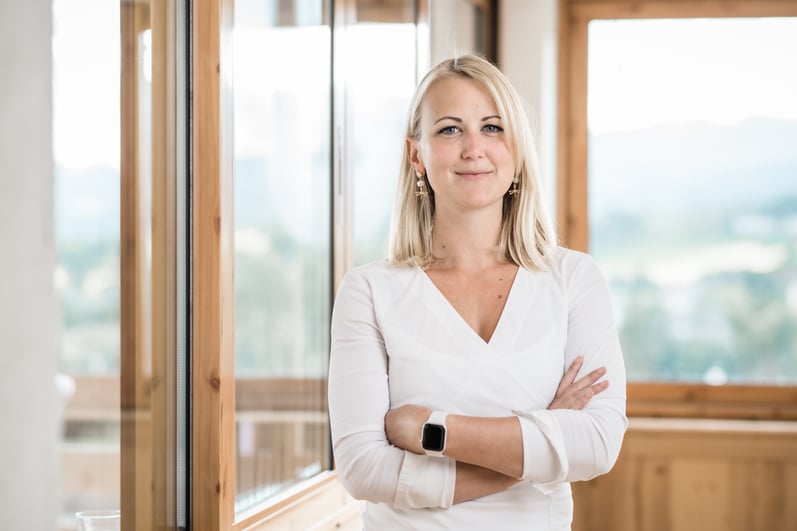
Machine translation is now used routinely in the translation industry. But can it work in “sensitive” sectors such as medical technology? We asked MEINRAD’s CEO Eva Reiterer.
You’re CEO of a translation agency. How do you see the changes brought about by machine translation?
I think translation agencies are used to working with machine translation now. We’ve been using it for about five years, we have an in-house team which focuses on the developments in machine translation, we’re ISO 18587 certified, and we advise 85% of our clients to use machine translation and full post-editing. At this stage, you can basically say that using artificial intelligence in the translation process is standard practice. It’s simply another way to produce translations, and for us as an agency it’s great that we can offer our clients another level of service.
Can it work in “sensitive” sectors such as medical technology?
Yes, it can work in medical translations too.
We don’t decide whether to use machine translation based on the sector, but on the type of text. We have a list of types of texts which are suitable for machine translation:
- technical documentation and product descriptions
- contracts and legal texts without convoluted sentences and specific vocabulary
- internal/informal texts
And medical technology businesses use these types of texts just as much as software developers or mechanical engineering firms, so there’s every reason to use machine translation and full post-editing in the medical sector too. We recommend that you always work with ISO 17100-compliant reviews to give you complete peace of mind when translating medical texts.
Are there machine translation providers who ban the use of their services for medical products?
Yes, DeepL for example: section 8.1.1 of the Terms and Conditions for DeepL Pro (the paid version) states that DeepL must not be used for producing translations for critical infrastructure, military or defence equipment or medical devices unless DeepL has given express written permission.
How do you get this permission?
I can only talk about the approval for MEINRAD, which we got thanks to our certifications for machine translation (ISO 18587), medical devices (ISO 13485) and translation services (ISO 17100). This special authorization allows us to use machine translation with post-editing for clients in every sector, including medical technology, because we have ISO-compliant quality assurance processes in place and because we only use machine translation with full post-editing.
If you had to sum up the idea behind ISO 18587 (machine translation) in one sentence, what would you say?
[laughs] Wow, sum up an ISO standard in one sentence? OK, I’ll give it a go. I think the main thing our clients need to know is this: ISO 18587 stipulates that the result of machine translation with subsequent full post-editing must not differ from the result of a human translation. So you can see how high the quality standards are for machine translation and human post-editing.
If the quality of machine translation (with full post-editing) is comparable with the quality of human translation, why isn’t machine translation and full post-editing used everywhere?
Machine translation can’t be used for all texts because the rules are so strict and the results must be the same as the results of a human translation – and machine translation engines can only produce high-quality results in certain circumstances. Stylistic requirements are another matter altogether, and when we get creative marketing texts we don’t hesitate to recommend transcreation. So it depends on the type of text, and on how the text is written: for each new project, you need to ask whether the text is suitable for machine translation. And only experts can answer that question, which in our case means our Project Managers, supported by our translators around the world.
Why is it so important to produce top-quality translations for medical technology?
The medical sector uses products which have direct impacts on patient health, so the risk of someone being injured, infected or harmed in any other way is much bigger than with most software products or machines. It’s absolutely crucial that medical technology companies make patient safety their top priority.
Legally speaking, when a claim is made, the manufacturer of the equipment must prove that they have done everything in their power to give their customers a top-quality product. And the product liability laws in Germany and Austria make clear that errors in the translation or in the technical documentation mean that the entire product is defective. Medical technology companies invest a huge amount of money in developing their products (e.g. in clinical trials), and of course nobody wants to run the risk of delivering a product which is ultimately defective because of a careless translation error.
Are these extremely high quality standards a challenge for a translation agency?
All our quality systems, workflows, Localization Engineers, translators and Project and Quality Managers are designed and trained to meet these requirements. It’s definitely a challenge – but for us it’s exactly the kind of challenge we relish!
Main image: © Rene Knabl


